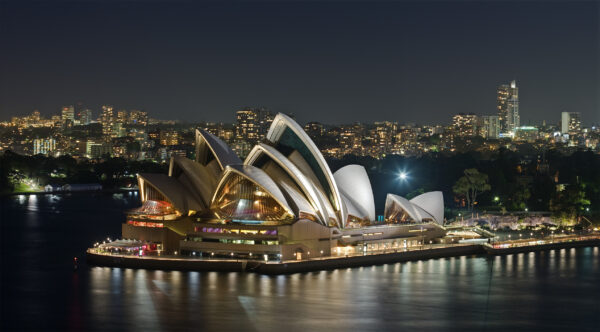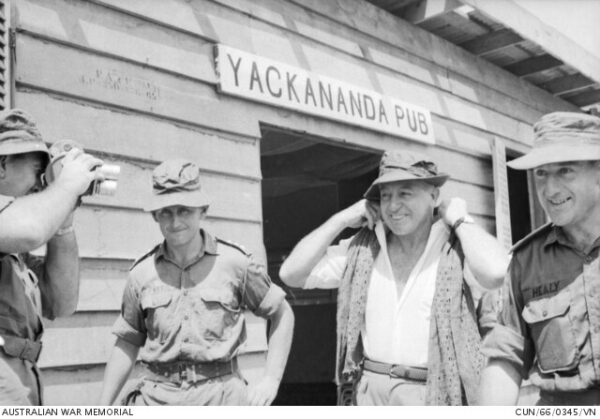When Queen Elizabeth II stood before the glittering waters of Sydney Harbour on October 20, 1973, to declare open the Sydney Opera House, the moment carried a symbolism that extended far beyond architecture. It marked the culmination of one of the most ambitious public works of the twentieth century—a project that had begun in controversy, endured years of political and technical turmoil, and emerged as a sculptural hymn to modernity. Few structures since the Eiffel Tower have so radically altered a nation’s image of itself.
The Opera House had been fourteen years in the making, its conception dating back to the postwar optimism of 1957 when the New South Wales government launched an international competition to design a world-class performing arts center. The winning entry came from a relatively unknown Danish architect, Jørn Utzon, whose sketches—ethereal shells rising above the harbor—seemed almost impossible to build. Utzon’s design, chosen from 233 entries, embodied a daring vision: a building that would fuse the grace of a sailing vessel with the grandeur of a cathedral. It was as if he had sculpted the sea breeze itself into concrete and tile.
Yet the dream quickly collided with the realities of engineering and politics. When construction began in March 1959, no one truly understood how to build Utzon’s soaring roof sails. Engineers wrestled with structural mathematics that defied precedent. The original estimate of £3.5 million ballooned to more than £60 million (over $100 million in U.S. terms), and delays stretched year after year. The project became a lightning rod for public frustration—what some derisively called “Utzon’s Folly.”
The political battles were brutal. In 1966, after years of disputes with the state government over funding and design changes, Utzon resigned in protest and left Australia, never to return to see his masterpiece completed. His departure cast a long shadow over the project’s final years. The remaining architects, led by Peter Hall, modified parts of the interior and reconfigured the concert halls, decisions that have remained controversial. And yet, even unfinished, the exterior—the luminous cascade of white shells—was already transforming Sydney’s skyline.
By the early 1970s, the Opera House had become a paradox: a public scandal and a national treasure in the making. Its construction site attracted pilgrims from around the world who saw in it not failure, but the audacity of human creativity. When the final tiles—more than a million of them—were set in place, they gleamed like seashells under the antipodean sun, a tribute to the maritime soul of the continent.
The opening ceremony on October 20, 1973, unfolded beneath perfect skies. Queen Elizabeth II, dressed in a powder-blue ensemble, praised the building as “a gift to the imagination” and a symbol of “Australia’s coming of age.” Fireworks erupted over the harbor. A fleet of yachts, their sails echoing the roof’s curves, gathered below in tribute. That night, the inaugural performance featured Beethoven’s Symphony No. 9—its “Ode to Joy” echoing across the newly minted Concert Hall in a moment of almost operatic symmetry: a European anthem christening a Pacific wonder.
For Australia, the Opera House became a kind of secular cathedral—proof that the country could create, not just extract or export. It announced to the world that a former penal colony could rival Europe in cultural ambition. The building’s geometry, its interplay of light and water, embodied the fusion of nature and technology that defined late modernism. Its success was not merely aesthetic but existential: it gave Australians a physical form for a national identity still searching for definition.
Over time, the narrative of conflict softened into one of reconciliation. In 2003, long after his death, Jørn Utzon received the Pritzker Architecture Prize, the profession’s highest honor. The jury described the Opera House as one of the great icons of the twentieth century, “a building that changed the image of an entire nation.” The same year, the Opera House itself underwent a restoration guided by Utzon’s son, Jan, symbolically healing the rift between the architect and the country that had both exalted and exiled him.
Today, the Sydney Opera House remains more than a performing arts venue. It is a monument to endurance and vision, a reminder that creation often requires conflict and that beauty sometimes demands excess. Its white sails rise like frozen waves, eternally poised between sea and sky, echoing the paradox of their making—fragile, improbable, and indelibly human.






